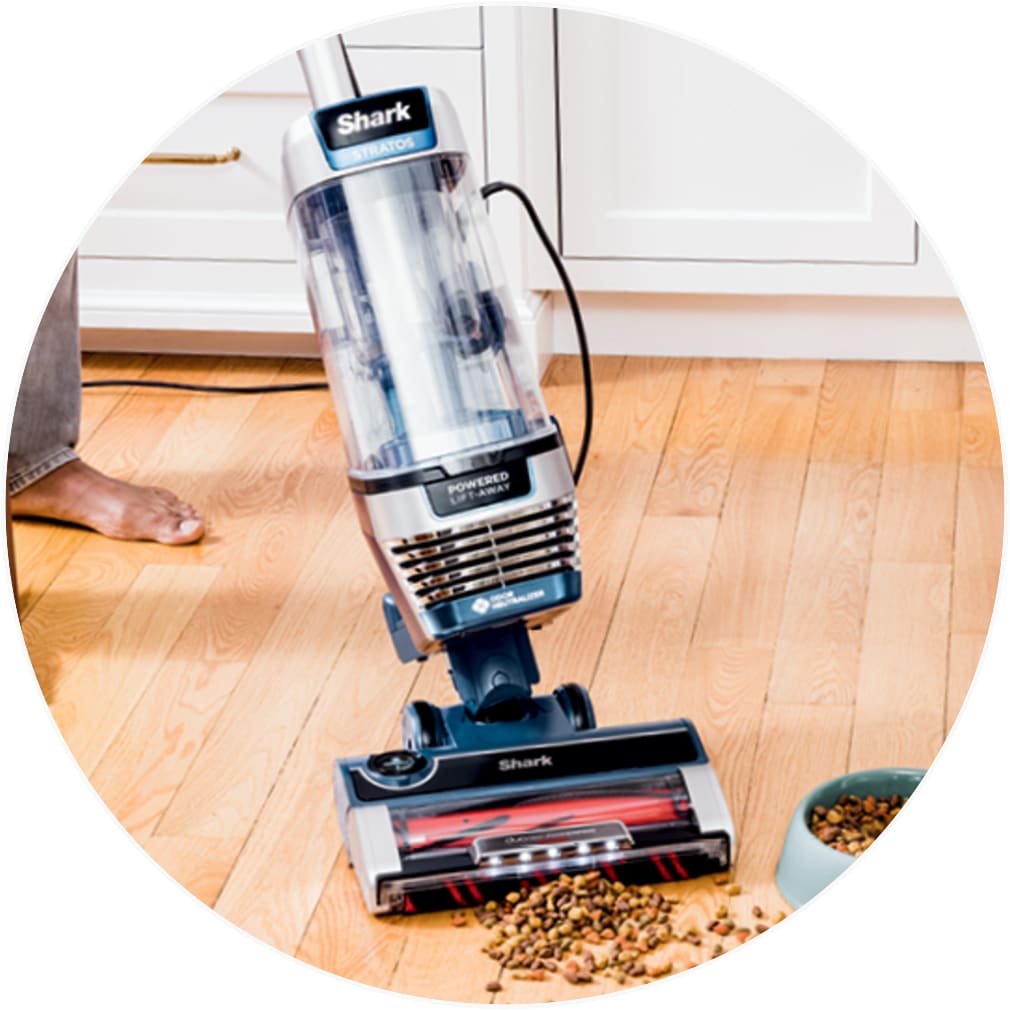Is your Shark vacuum not picking up dirt like it used to? A clogged or dirty brush head could be the culprit. Over time, hair, threads, and debris can accumulate around the brush roll, reducing its effectiveness. Cleaning your Shark vacuum’s brush head is a simple maintenance task that can significantly improve its performance and extend its lifespan. This guide provides a comprehensive, step-by-step approach to thoroughly cleaning your Shark vacuum brush head, ensuring optimal suction and cleaning power.
Keeping your Shark vacuum’s brush head clean is essential for maintaining a hygienic home environment. A dirty brush head can harbor bacteria, allergens, and unpleasant odors, which can then be spread around your home during vacuuming. By regularly cleaning the brush head, you not only improve your vacuum’s performance but also contribute to a healthier living space. Let’s dive into the steps required to restore your Shark vacuum to its peak cleaning condition!
Table of Contents
- 1. Gather Your Cleaning Supplies
- 2. Disconnect the Vacuum and Remove the Brush Head
- 3. Remove Hair and Debris from the Brush Roll
- 4. Clean the Brush Head Housing
- 5. Wash the Brush Head (If Applicable)
- 6. Reassemble the Brush Head
- 7. Troubleshooting Common Issues
- FAQ Section
- Tips, Warnings, and Best Practices
- Conclusion
1. Gather Your Cleaning Supplies

Before you begin, gather the necessary supplies to make the cleaning process efficient and effective. Having everything on hand will save you time and prevent interruptions.
- Screwdriver: Depending on your Shark vacuum model, you may need a screwdriver to remove the brush head cover. Check your vacuum’s manual to determine the correct type and size.
- Scissors or Seam Ripper: These tools are essential for cutting away tangled hair and threads wrapped around the brush roll.
- Soft Brush or Toothbrush: A soft brush is ideal for gently removing loose debris and dust from the brush head and surrounding areas.
- Damp Cloth or Microfiber Towel: Use a damp cloth to wipe down the brush head and remove any remaining dirt or residue.
- Trash Can or Bag: Keep a trash receptacle nearby to discard the collected debris and prevent a mess.
2. Disconnect the Vacuum and Remove the Brush Head
Safety first! Always disconnect your Shark vacuum from the power outlet before performing any maintenance or cleaning tasks. This prevents accidental start-ups and ensures your safety.
- Disconnect the Vacuum: Unplug the vacuum from the electrical outlet.
- Locate the Brush Head Cover: Identify the cover that protects the brush head. It is usually located on the bottom of the vacuum head.
- Remove the Cover: Depending on your model, you may need to use a screwdriver to loosen screws or release clips. Refer to your vacuum’s manual for specific instructions.
- Remove the Brush Head: Once the cover is removed, gently lift the brush head out of the vacuum head.
3. Remove Hair and Debris from the Brush Roll

This is the most crucial step in cleaning your Shark vacuum brush head. Removing tangled hair and debris will significantly improve the brush roll’s performance.
- Inspect the Brush Roll: Examine the brush roll for tangled hair, threads, and other debris.
- Cut Away Tangled Hair: Use scissors or a seam ripper to carefully cut away any tangled hair or threads wrapped around the brush roll. Be cautious not to damage the bristles.
- Remove Debris: Once the hair is cut, gently pull it away from the brush roll. You may need to use your fingers or a small tool to dislodge stubborn debris.
- Clean the Brush Roll Ends: Pay close attention to the ends of the brush roll, where hair and debris tend to accumulate.
4. Clean the Brush Head Housing

The area surrounding the brush head can also accumulate dirt and debris, affecting the vacuum’s performance.
- Remove Loose Debris: Use a soft brush or toothbrush to remove any loose dirt, dust, or debris from the brush head housing.
- Wipe Down Surfaces: Use a damp cloth or microfiber towel to wipe down the interior of the brush head housing.
- Check for Blockages: Inspect the airways and openings for any blockages. Use a small tool or your fingers to remove any obstructions.
5. Wash the Brush Head (If Applicable)
Some Shark vacuum models have brush heads that can be washed. Check your vacuum’s manual to determine if your brush head is washable.
- Check the Manual: Confirm that your brush head is washable.
- Wash with Mild Soap: If washable, rinse the brush head under warm water and gently wash it with a mild soap or detergent.
- Rinse Thoroughly: Rinse the brush head thoroughly to remove all traces of soap.
- Allow to Dry Completely: Before reassembling, allow the brush head to dry completely. This may take several hours or even overnight.
6. Reassemble the Brush Head
Once the brush head and housing are clean and dry, reassemble the vacuum.
- Reinsert the Brush Head: Place the clean brush head back into the brush head housing. Ensure it is properly aligned.
- Reattach the Cover: Reattach the brush head cover, securing it with screws or clips, as required by your model.
- Test the Vacuum: Plug the vacuum back into the electrical outlet and test its performance. Ensure the brush roll is spinning freely and effectively.
7. Troubleshooting Common Issues
Even after cleaning, you might encounter some issues. Here are a few common problems and their solutions:
- Brush Roll Not Spinning:
- Problem: The brush roll is not spinning even after cleaning.
- Solution: Check for blockages in the brush head housing or brush roll. Ensure the brush roll is properly aligned and not obstructed. If the problem persists, the motor may be faulty, and you should consult a repair technician.
- Reduced Suction:
- Problem: The vacuum has reduced suction after cleaning the brush head.
- Solution: Check for blockages in the hose, wand, or dust cup. Ensure all connections are secure and airtight.
- Unusual Noises:
- Problem: The vacuum is making unusual noises after cleaning.
- Solution: Ensure all parts are properly assembled and secured. Check for any loose components or obstructions in the brush head or motor area.
FAQ Section
How often should I clean my Shark vacuum brush head?
It is recommended to clean your Shark vacuum brush head at least once a month, or more frequently if you have pets or heavy foot traffic. Regular cleaning prevents the accumulation of hair and debris, which can reduce the vacuum’s effectiveness and lifespan.
Can I use any type of soap to wash the brush head?
No, you should only use a mild soap or detergent to wash the brush head. Harsh chemicals or abrasive cleaners can damage the bristles and reduce the brush head’s performance. Always rinse thoroughly to remove all traces of soap.
What if I accidentally damage the brush roll bristles during cleaning?
If you accidentally damage the brush roll bristles, you may need to replace the brush head. Contact Shark customer service or check online retailers for replacement brush heads compatible with your vacuum model.
How do I prevent hair from tangling around the brush roll?
To minimize hair tangling around the brush roll, vacuum frequently and use a vacuum model with a self-cleaning brush roll feature if possible. Regularly cutting away tangled hair and debris will also help prevent excessive accumulation.
Can I use a metal tool to remove debris from the brush head?
Avoid using metal tools, as they can damage the brush roll bristles or scratch the brush head housing. Instead, use plastic tools or your fingers to gently remove debris.
What should I do if my Shark vacuum still isn’t working after cleaning the brush head?
If your Shark vacuum still isn’t working properly after cleaning the brush head, check for other potential issues, such as a full dust cup, clogged filters, or a blocked hose. If the problem persists, consult a qualified repair technician or contact Shark customer service for assistance.
Tips, Warnings, and Best Practices
- Safety First: Always disconnect the vacuum from the power outlet before cleaning or performing maintenance.
- Read the Manual: Refer to your Shark vacuum’s manual for specific cleaning instructions and recommendations.
- Use the Right Tools: Use the appropriate tools to avoid damaging the brush head or other vacuum components.
- Be Gentle: Avoid using excessive force when removing debris or cleaning the brush head.
- Dry Thoroughly: Ensure all parts are completely dry before reassembling the vacuum.
- Regular Maintenance: Perform regular maintenance to keep your Shark vacuum in optimal condition.
Conclusion
Cleaning the brush head on your Shark vacuum is a straightforward process that can significantly improve its performance and extend its lifespan. By following these step-by-step instructions, you can ensure your vacuum maintains optimal suction and cleaning power. Regular maintenance, including cleaning the brush head, contributes to a cleaner, healthier home environment.
Take action today and give your Shark vacuum’s brush head a thorough cleaning! Your floors – and your vacuum – will thank you for it. Make it a part of your regular cleaning routine to keep your home spotless and your vacuum running like new.







